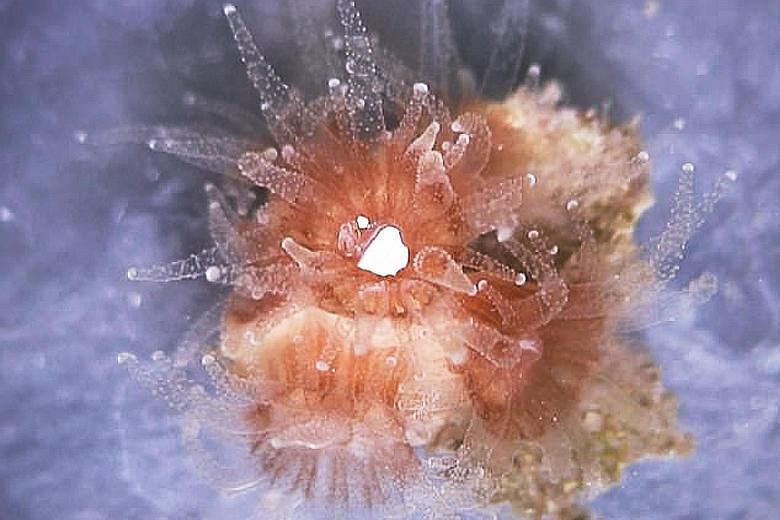The ocean is full of plastic.
Eight million tonnes are dumped into the seas every year.
Plastic bags are found in the guts of dead sea turtles, which mistake them for jellyfish. Over 200 species have been documented eating plastic, which looks colourful and edible but can kill them.
In laboratory experiments, even tiny corals, the organisms that make up reefs, have been observed nibbling on a confetti of broken-down plastic fragments similar to what swirls through the depths.
But they are not just eating whatever floats by.
Instead, according to a new study in Marine Pollution Bulletin, some of the chemicals infused in the plastic may actually taste like food to the corals.
It is not yet clear how much plastic is consumed by corals in the wild, or what harm it might do to these important marine organisms, which are already threatened by environmental dangers like warming seas and pollution.
But understanding why plastic might appeal to them is important, especially because some particles appear to get stuck in the corals, potentially disrupting their digestive process.
-
8m
Number of tonnes of plastic dumped into the seas every year.
>200
Number of species documented eating plastic, which looks colourful and edible.
Hundreds of chemicals are mixed into plastics to achieve certain textures or other characteristics.
Because the corals sense the presence of food with receptors, it would not be all that surprising if some chemical additives mimicked substances that set off the corals' appetites, suggested Mr Alexander Seymour and Mr Austin Allen, who were both graduate students at Duke University when they led this study.
The researchers offered corals collected from North Carolina's coastal waters two kinds of plastic to see what would be more popular: older plastic, weathered in seawater and covered with a thin layer of bacteria, or plastic fresh from the factory. The corals seemed to prefer the newer plastic, ingesting more of it than the older shards.
The difference between the consumption of new and old plastic could come down to the concentrations of additive chemicals.
Perhaps the microbes on weathered plastic kept those added compounds from reaching the corals as swiftly. Or maybe the microbes produced substances that kept the corals from eating them as quickly.
Professor Daniel Rittschof, the pair's adviser, and other members of the lab are now working to verify whether substances in plastic are tasty to marine invertebrates.
"If we can manufacture plastic to taste attractive, maybe we can manufacture plastic to taste repulsive," Mr Seymour said. "Maybe we can prevent critters from eating plastic in the first place."
NYTIMES

